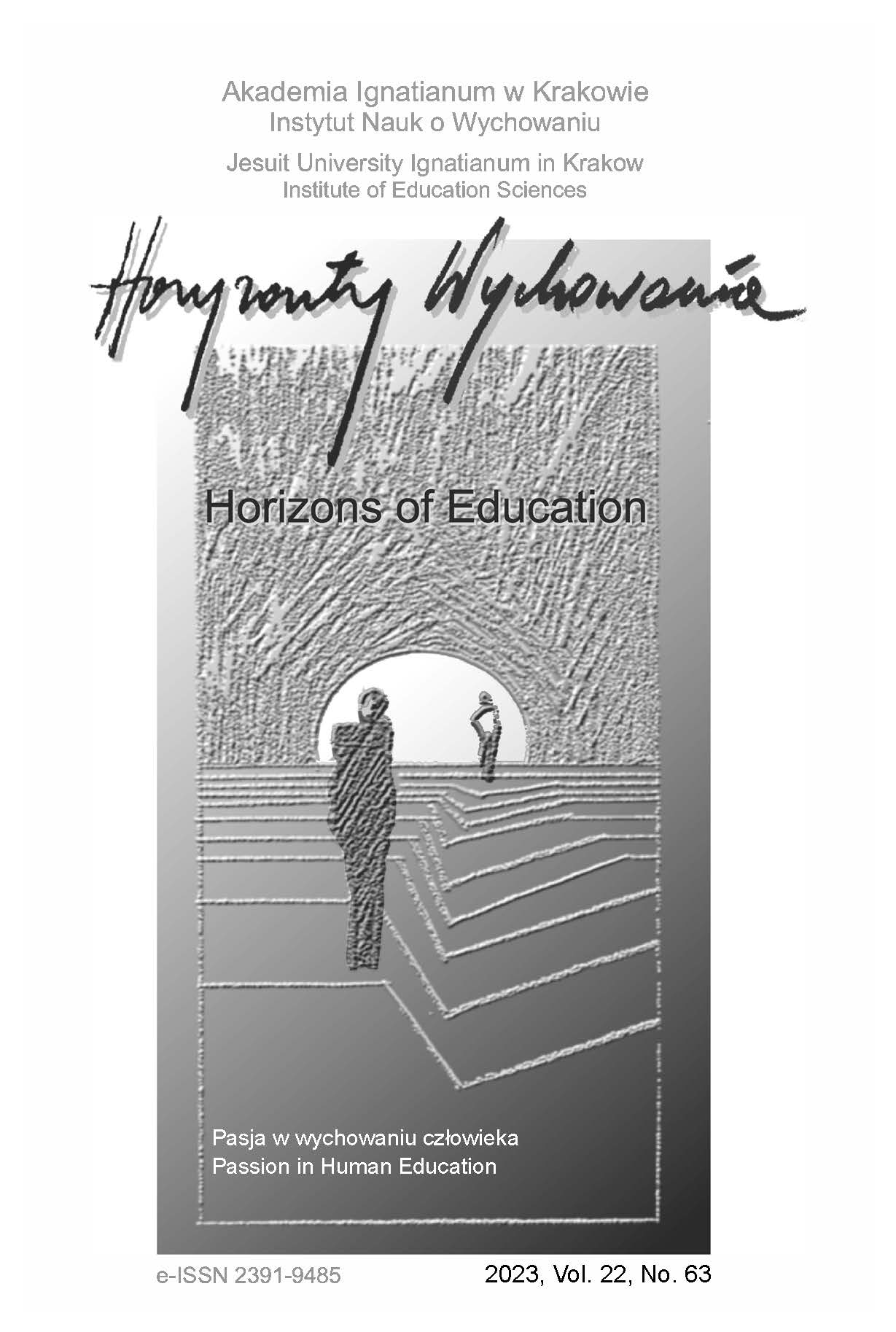Young People’s Passions and Technological Modernity
Abstract
RESEARCH OBJECTIVE: The aim of the article is to learn about the current areas of passion, as well as, opinions on having these (assessment of their importance, the amount of time devoted to pursuing passions, verification in the emotional context) in the perception of young people. and the present day.
THE RESEARCH PROBLEM AND METHODS: The research problem is the question about the areas of interest and passion of the contemporary youth in the context of intensive development and dissemination of technology. The study was conducted using the diagnostic survey method based on the author’s questionnaire. In the presented article, statements of young people aged 18 to 26, referring to their own interests and passions, were analyzed. An analysis of available reports and publications was performed, as well as own research (surveys).
THE PROCESS OF ARGUMENTATION: The key terms for the analysis were defined and the results of the survey were presented.
RESEARCH RESULTS: The conducted analysis showed not only the focus of interests and passions within two main areas, i.e. music and film, but, also indicated specific premises concerning the positive impact of having a passion on well-being, and also outlined the challenges related to the lack of sufficient time to pursue passions or the low share of schools in the process of developing passion, as well.
CONCLUSIONS, INNOVATIONS AND RECOMMENDATIONS: The research results presented in the paper do not only confirm the thesis about the dominance of interests and passions of contemporary youth in areas related to the modern Internet or television. The results of the research provide information about the most popular areas of passion among young people, and outline the challenges faced by e.g. in front of educational institutions, in the context of stimulating and developing passion.
References
Babbie, E. (2003). Badania społeczne w praktyce (W. Betkiewicz i in., tłum.). Wydawnictwo Naukowe PWN.
Crutzen, P.J. i Stoermer, E.F. (2000). The „Anthropocene”. Global Change Newsletter, 41, 17–18.
Cyrklaff, M. (2014). Przegląd pasji, hobby i zainteresowań bibliotekarzy wojewódzkich bibliotek publicznych oraz ich wpływ na twórcze wykonywanie pracy zawodowej. Wyniki badań ankietowych. W: M. Wojciechowska (red.), Strefa kultury, strefa nauki. Współczesny obraz biblioteki(s. 316–332). Oficyna Wydawnicza Edward Mitek.
Daily, L.Z. (2018). Towards a definition of „hobby”: An empirical test of a proposed operational definition of the word hobby. Journal of Occupational Science, 25(3), 368–382.
Dudzikowa, M. i Nowak, M. (2015). Wprowadzenie, W: M. Dudzikowa i M. Nowak (red.), O pasjach cudzych i własnych – profesorowie (s. 7–12). Wydawnictwo KUL.
Grzesiak, K. i Zinkiewicz, B. (2011). Kim zostanie moje dziecko? Dla rodziców. Krakowskie Towarzystwo Edukacyjne, Ministerstwo Edukacji Narodowej.
Gurycka, A., (1989). Rozwój i kształtowanie zainteresowań. Wydawnictwa Szkolne i Pedagogiczne.
Kielar-Turska, M. (2000). Rozwój człowieka w pełnym cyklu. W: J. Strelau (red.), Psychologia. Podręcznik akademicki (t. 1, s. 285–332). Gdańskie Wydawnictwo Psychologiczne.
Kleszcz, M. i Łączyk, M. (2013). Młodzież licealna wobec wartości, samotności i pasji. Oficyna Wydawnicza „Impuls”.
Krajewski, M. (2017). Pasja i formy jej degeneracji. W: M. Dudzikowa i M. Nowak (red.), O pasjach cudzych i własnych – profesorowie (s. 37–51). Wydawnictwo KUL.
Ludwisiak K., Polguj M., Majos A. i Drygas W. (2016). Wpływ mediów na zachowania zdrowotne młodych osób dorosłych. Medycyna Ogólna i Nauki o Zdrowiu.
Copyright (c) 2023 HORIZONS OF EDUCATION

This work is licensed under a Creative Commons Attribution-NoDerivatives 4.0 International License.
Authors who publish in this journal agree to the following terms:
- Authors retain the copyright to their work while granting the journal the right of first publication. The work will be simultaneously licensed under a CC BY-ND license, which permits others to share the work with proper credit given to the author and the original publication in this journal.
- Authors may enter into additional, non-exclusive agreements for the distribution of the published version of the work (e.g., posting it in an institutional repository or publishing it in another journal), provided that the original publication in this journal is acknowledged.
We allow and encourage authors to share their work online (e.g., in institutional repositories or on personal websites) both before and during the submission process, as this can foster beneficial exchanges and lead to earlier and increased citations of the published work. (See The Effect of Open Access). We recommend using any of the following academic networking platforms:





